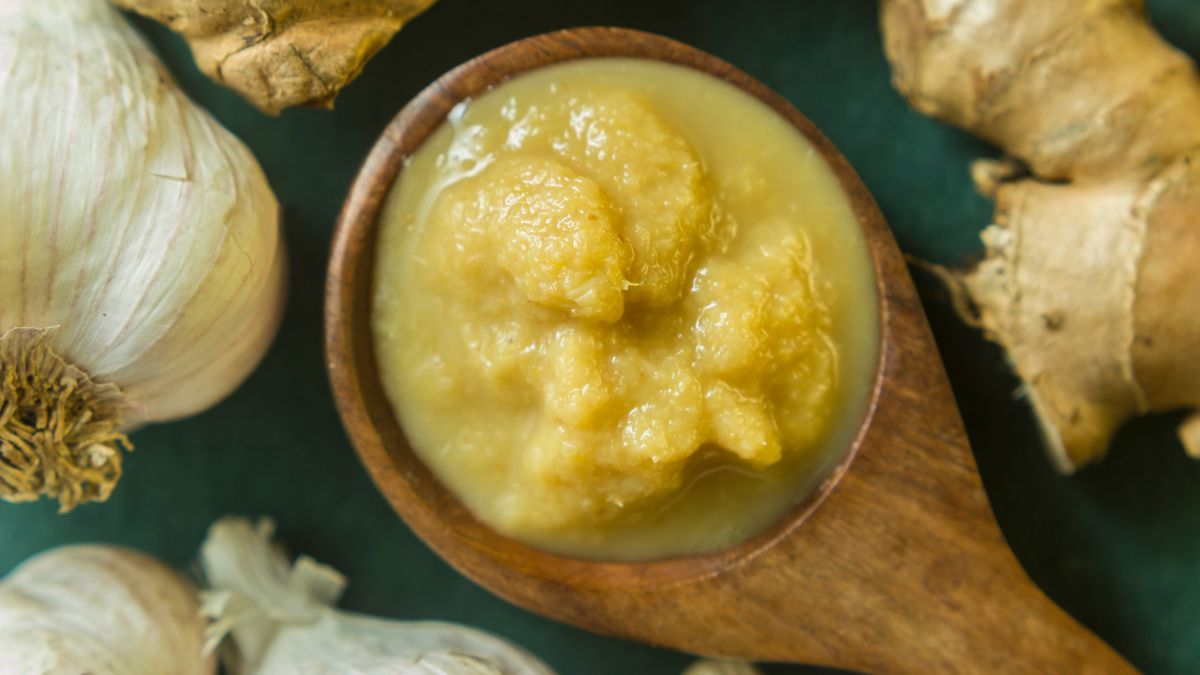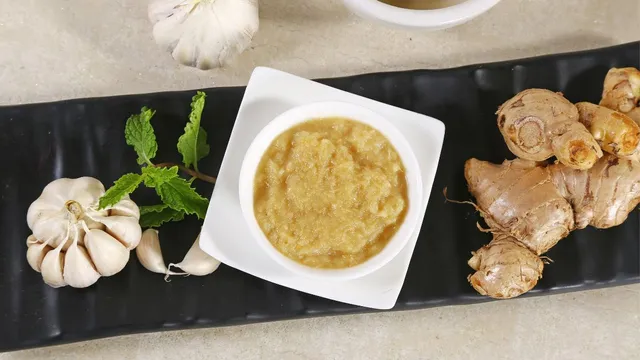- By Iram Hussain
- Mon, 23 Jun 2025 09:34 AM (IST)
- Source:JND
Ginger-garlic paste serves as a cornerstone ingredient in numerous global cuisines, most notably in Asian and Indian culinary traditions. It adds depth, warmth and aroma to various dishes from curries and stir-fries to marinades and sauces. The increasing demand for convenience has led to a surge in ready-to-use ginger-garlic pastes. However, this has also opened the door to adulteration. Unscrupulous manufacturers often add cheap fillers like corn starch, rice flour and chalk powder to increase shelf life and production volume. These adulterants dilute the flavour and nutritional value of real ginger and garlic while synthetic aromas and artificial colours can deceive the senses.
The consequences of consuming adulterated ginger-garlic paste can be detrimental to gut health, making it essential to prioritise purity and authenticity when selecting this essential ingredient. To make your work a bit easier, we've compiled some easy ways to check adulterated or fake ginger garlic paste at home.
Ways To Check Adulterated Ginger Garlic Paste
Check The Texture
To detect adulteration in ginger-garlic paste, check its texture. Authentic paste retains a slight fibrousness while adulterated versions feel unnaturally smooth. Look for a coarse consistency.
Look For Consistency
Beware of the paste that's excessively creamy or uniform. This could indicate the presence of flour or artificial thickeners, bulking up the paste and diluting its flavour and nutritional value.
ALSO READ: How To Identify Adulterated Bottle Gourd? 4 Easy Tests You Can Do At Home
Smell Test
A genuine ginger-garlic paste emits a sharp and fresh aroma. Be cautious of strong chemical-like or overly sour scents as these may indicate the presence of preservatives.
Look For Colour
Inspect the colour of the ginger-garlic paste. A suspiciously pale or white hue may signal the presence of chalk powder fillers. A suspiciously yellowish hue may suggest that turmeric has been added to mask the use of subpar ingredients, thereby undermining the paste's genuineness and nutritional benefits.

Tests to check adulteration in ginger garlic paste (Image Credits: Canva)
Water Test
Dissolve a spoonful of paste in water to reveal its authenticity. A pure paste will blend seamlessly while adulterated versions will separate or leave residue. Significant sediment or separation indicates the presence of fillers or thickeners.
ALSO READ: What Are The Common Adulterants In Paneer And How To Identify Them At Home?
Things To Keep In Mind While Buying
When buying store-bought ginger-garlic paste, scrutinise the label carefully.
Ensure ginger and garlic are listed as primary ingredients with no unnecessary additives like water, salt or oil.
Look for transparency and avoid products with synthetic colours or preservatives.
Opt for reputable brands with FSSAI certification, clear manufacturing dates and genuine branding to guarantee a safe and authentic product.

